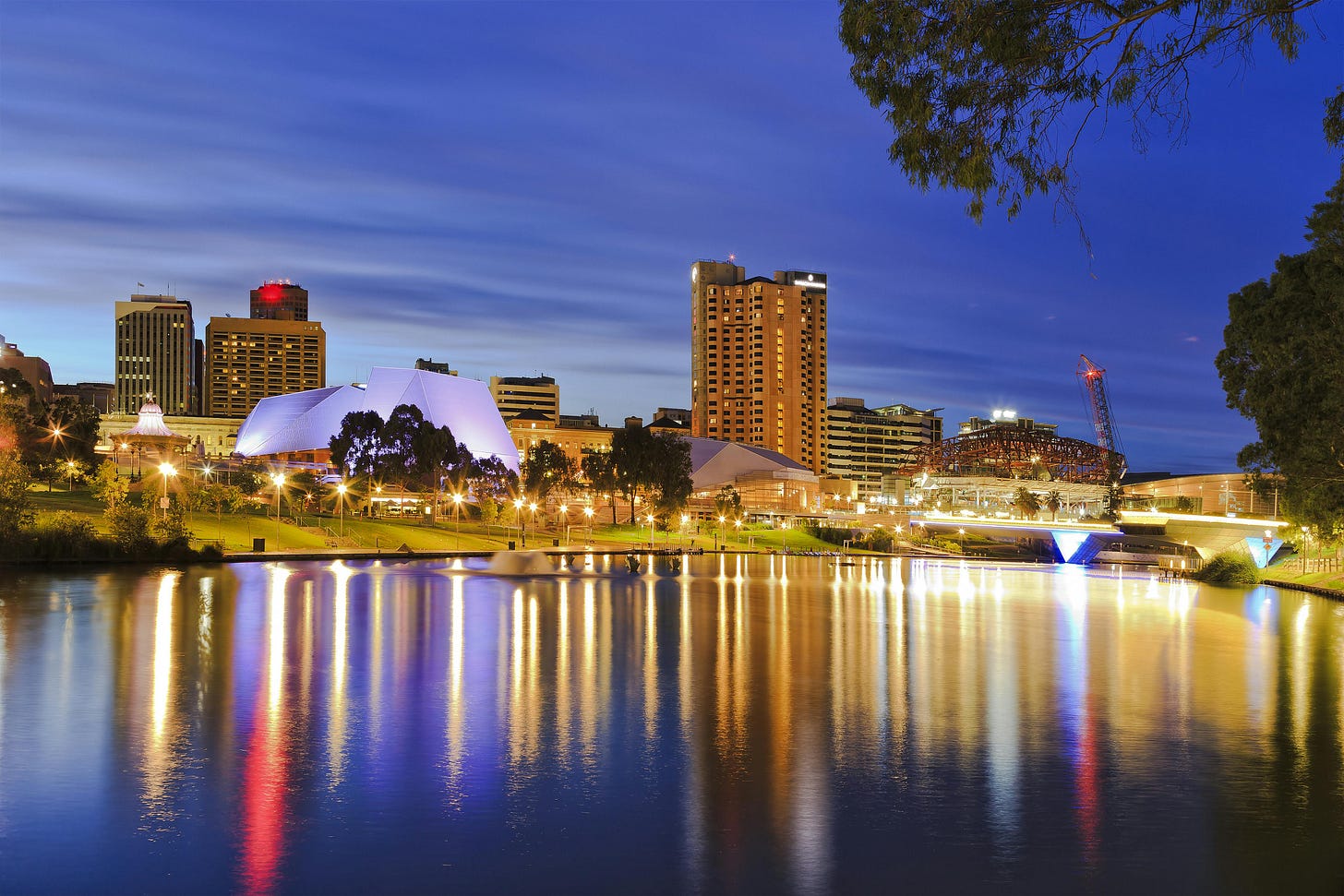Enemy of the State
On 1 July 2014, my first day as a Senator, Adelaide’s Advertiser newspaper published an opinion piece I had written with the heading, Shedding the ‘Bludger State’, in which I implored the SA State Government to stop bludging on the other states and start standing on its own two feet.
Premier at the time, Jay Weatherill, responded by calling me ‘an enemy of the state’.
Many South Australians remember the time when more than a dozen of Australia’s top 100 listed companies had their head offices in Adelaide – News Ltd, Fauldings, Southcorp, Elders, Normandy Mining, Adelaide Bank, Adelaide Brighton, Standard Chartered Finance, to name just a few. Today there’s just one – Santos (and even it is only headquartered in Adelaide because of some obscure arrangement).
At the time of Federation, South Australia led the constitutional debates and had an influential hand in shaping the new Commonwealth of Australia. For decades after, Adelaide was Australia’s Number 3 city – bigger and more prosperous than either Brisbane or Perth.
Led by Tom Playford, South Australia prospered under the principle of ‘cheap land, cheap power, cheap water, and cheap labour’. Wages were lower than in Sydney and Melbourne but, despite that, the quality of life and standard of living of South Australians were higher than their interstate counterparts.
Since those halcyon days, South Australia has lost each of the competitive edges that made it prosperous.
Australia has the highest level of vertical fiscal imbalance of any federal country in the world.
First to go was cheap land – thanks to urban planning controls – then water, then lower wages due to centralised wage fixing (waiters, nurses, and factory workers across Australia all had to get the same pay).
As for power prices, they are now not just the highest in Australia, but some of the highest in the world.
SA is destined to be a mendicant State for a long time to come.
Former Prime Minister Bob Hawke once said, “We’re all Australians, whether we’re from Melbourne or Sydney”.
Where those from the ‘outlying States’ (as Paul Keating called them) belonged was anyone’s guess.
When Australia came together as a nation in 1901, Sir Samuel Griffith, nailed it by saying:
“We must not lose sight of the essential condition that this is to be a federation of states and not a single government of Australia. The separate states are to continue as autonomous bodies, surrendering only so much of their power as is necessary for the establishment of a general government to do for them collectively what they cannot do individually for themselves.”
The powers given to the Federal Government by the states in 1901 included trade and commerce, corporations, currency, banking, pensions, taxation, foreign affairs, communications, copyright, marriage and family law, quarantine, and defence. There was no mention of hospitals, schools, or disability services.
When the NDIS was announced in 2012, it was forecast to cost the Commonwealth Government $14bn a year. This year it will hit $50bn, and by 2035 is expected to exceed $100bn. Then there are the many other things, like pink batts and carbon dioxide emissions, on which federal governments have decided they want to spend our money.
Not surprisingly, the first area where the boundaries between state and federal governments were tested related to tax.
In 1942, all income taxing power was handed to the federal government for the duration of World War II under the ‘defence’ power of the Constitution. This was intended to be temporary and to last until the end of the war. But as predictable as the sunrise, when the war ended the feds did not relinquish their income tax collector role (not that the states wanted to resume income tax collection, but that is not the point).
Since then, the tax revenue balance has continued to move away from the states and towards the feds. This is known as ‘vertical fiscal imbalance’.
Wages were lower than in Sydney and Melbourne but, despite that, the quality of life and standard of living of South Australians were higher than their interstate counterparts.
Australia has the highest level of vertical fiscal imbalance of any federal country in the world. The federal government raises over 70% of all government revenues – much more than is required to fund its own operations – while the states don’t raise anywhere near enough to fund theirs. The feds then make up the shortfall through Commonwealth grants.
This creates a perpetual blame game. Failures at the state level are blamed on the feds’ lack of funding, and failures at the federal level are blamed on the states’ poor service delivery.
Duplication of health and education bureaucracies alone costs taxpayers billions of dollars, yet the feds do not run a single hospital or a single school.
This cannot go on. State and federal governments should only collect taxes for their own purposes, and taxpayers and consumers should be fully informed as to what is a state tax and what is a federal tax. Those who spend the money should bear the responsibility of raising it.
This confusing power structure between the states and the federal government – and between individual states – was emphatically exposed during Covid, with many calling for the abolition of state governments and the formation of one national government.
But as Covid revealed, the federal government doesn’t have the power it thought it had. The feds may have the money, but it’s the states that have the power.





Lucky! How do I get Malinauskas to call me an enemy of the State?